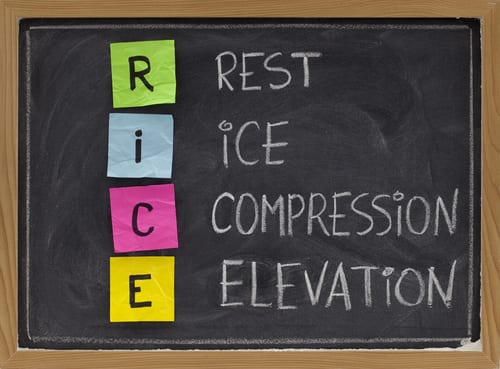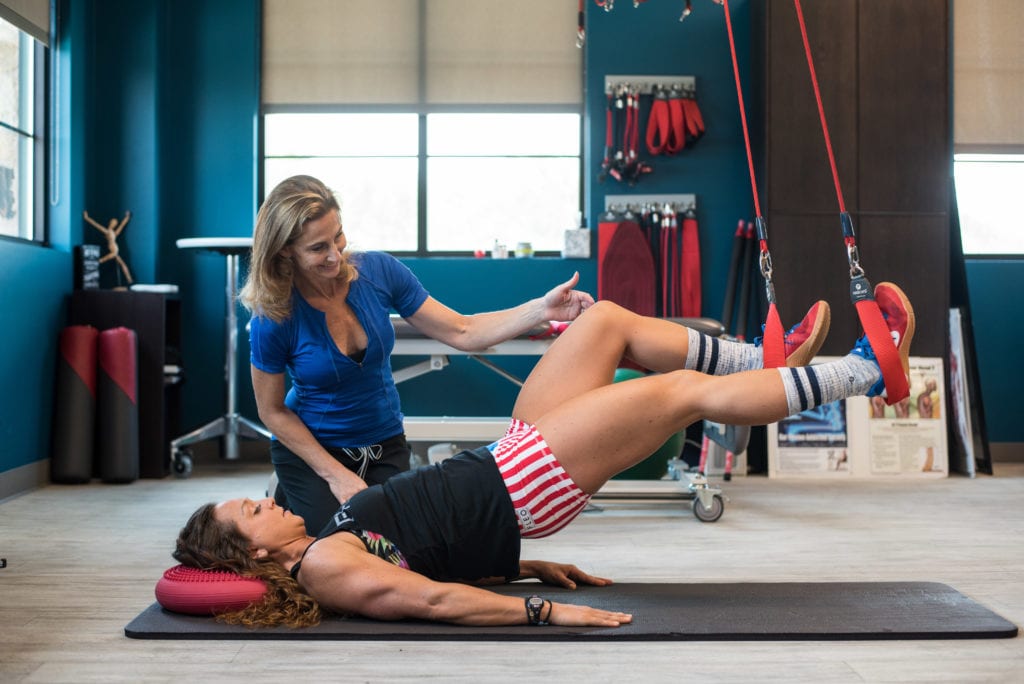The Origin of R.I.C.E. for Athletic Injuries
Most people have suffered athletic injuries at some age like a sprained ankle, jammed finger or twisted knee. Often times the treatment for these injuries involves the elements of RICE (rest, ice, compression and elevation) along with NSAIDs (advil, Aleve, diclofenac, etc.) for further anti-inflammatory effects. The recommendation of this treatment approach can come from past experience, friends, coaches, athletic trainers or physicians. That is because RICE/NSAID have been the common formula for musculoskeletal and athletic injuries for decades.

This therapy became ubiquitous after Dr. Gabe Mirkin published its merits in his 1978 best-selling Sportsmedicine Book.1 Since then, RICE/NSAIDs has been used extensively with the idea to quickly reduce pain and inflammation for a rapid return to function. When the primary purpose of treatment is to reduce pain, anti-inflammatory strategies such as RICE, NSAIDs and even steroids are excellent tools. The problem is that while these strategies decrease pain, they also delay, or reduce tissue healing. This is because repair of injured tissues relies on our body’s inflammatory process that these therapies stop.
Is Inflammation Normal?
The term “inflammation” has gotten a bad rap over the years. We hear of antiinflamatory diets, anti-inflammatory medications and anti-inflammatory devices to speed up recovery. Now, I agree it is good to reduce some forms of inflammation such as in the gut or blood vessels. But, inflammation is actually a normal physiologic process that is crucial for healing of musculoskeletal injuries.
This phenomenon involves inflammatory cells (platelets, macrophages, mesenchymal stem cells) migrating to the site of tissue damage. When they arrive, these cells begin a complex process of tissue debridement, repair and remodeling. The end result is hopefully a strong and healthy structure. We can visualize this process take place when see a healing cut on our skin. The same process happens internally when our tendons, ligaments and muscles are damaged.

The M.E.A.T. Alternative for Athletic Injuries
Research over the years has widely disputed anti-inflammatory methods, including NSAIDs and the elements of RICE, for tissue healing.2,3 In fact, these methods often slow or prevent tissue healing. Based on the new evidence, even Dr. Mirkin, the founder of RICE, recanted the principal in 2015 (https://www.drmirkin.com/fitness/why-ice-delays-recovery.html).
In this entry, he states, “In a recent study, athletes were told to exercise so intensely that they developed severe muscle damage that caused extensive muscle soreness. Although cooling delayed swelling, it did not hasten recovery from this muscle damage. A summary of 22 scientific articles found almost no evidence that ice and compression hastened healing over the use of compression alone, although ice plus exercise may marginally help to heal ankle sprains (The American Journal of Sports Medicine, January, 2004;32(1):251-261).”
A proposed alternative to RICE for acute athletic injuries involves the MEAT (movement, exercise, analgesia, treatment) protocol. The MEAT approach relies on a slow progression of range-of-motion and titration of exercise in order to naturally reduce the swelling and help guide the tissues to heal in their proper configuration. Therapeutic, guided exercise is an excellent form of rehabilitation that minimizes the detrimental deconditioning effects of rest and immobility. These include muscle atrophy and weakening of connective tissue such as tendons and ligaments.

Pain-reducing (analgesia) strategies can help facilitate participation in the rehabilitation. This can include natural pain relievers such as CBD, Boswellia, or turmeric along with medications that do not affect inflammation. The “treatment” component includes modalities that can facilitate pain relief and healing such as heat, class IV laser and TENS.

What If You Still Need Something More?
Another problem arises with chronically inflamed tissues. Here, the body is trying to heal some type of damage, but the inflammatory process is too weak to accomplish the task. In these scenarios, a person can have chronic, nagging pain without the hope of repair. We often encounter this in tissues that have a poor blood supply. In these tissues, physicians can help kick-start, or enhance tissue healing by focally placing the cells that initiate healing (platelets, stem cells) into, and around, the areas of damage. This is the principal behind regenerative medicine therapies (platelet-rich plasma alone or with stem cells from bone marrow aspirate concentrate-BMAC) practiced at CHARM.
So overall, RICE can help with acute pain, but may delay, or inhibit, long-term tissue repair. Active rehabilitation with the MEAT approach can provide a healthier approach to addressing injured tissues. In structures that have chronic pain without tissue healing, we can consider augmenting the physiologic response by employing regenerative medicine treatments like PRP or BMAC with PRP. The physicians and physical therapists at CHARM are experts at prescribing therapeutic exercises and treatments to help rapid return of acute and chronic musculoskeletal and athletic injuries.

Board-Certified Physical Medicine & Rehabilitation by ABPMR and AOBPMR
Fellowship-Trained and Board-Certified in Pain and Musculoskeletal Medicine
References
- Mirkin G, Hoffman M. The Sports Medicine Book. Sydney: Landstowne; 1978
- The American Journal of Sports Medicine, January, 2004;32(1):251-261
- Cooke, JP. Inflammation and Its Role in Regeneration and Repair A Caution for Novel Anti-Inflammatory Therapies. Circulation Research. 2019;124:1166–1168
- The American Journal of Sports Medicine, June 2013
- https://www.drmirkin.com/fitness/why-ice-delays-recovery.html



